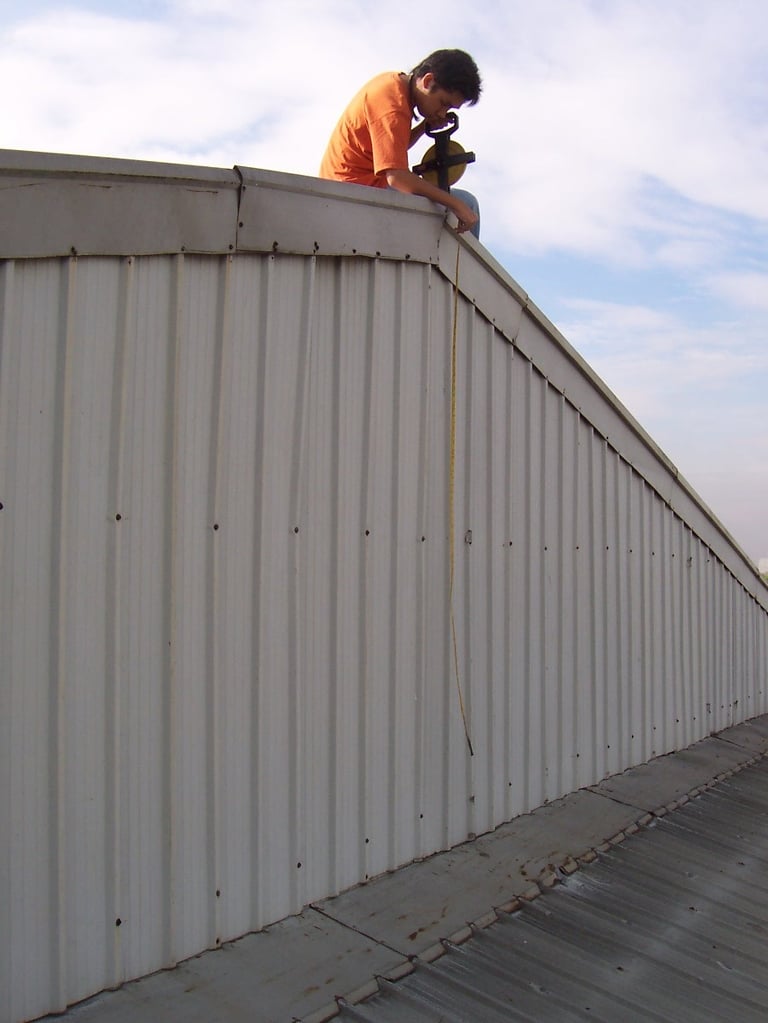A Site Visit to the Edge… of the Roof: How Hospital Repairs May Demand a Clever Solution
My first assignment in my internship as architect-in-training was to measure out the accuracy of the roof plan created by the lead architect. As hospitals rarely cease operations, the solution was ingenious. Read on!
SPACE
Richard Lasam
2/4/20253 min read


As mundane as it sounds, every journey starts with the first step, and in my case, that was the year 2008—the year I graduated from architecture college and joined the work force. I was one of the outliers in my class as I was hired before graduating and right away became an apprentice in Luis & Associates, a firm that became my training grounds for healthcare architecture.
You would think that being in a firm dedicated to healthcare facilities will allow me to work immediately on such projects. In a way, it was partially an accurate prediction on my end. I was assigned to a hospital, all right—a project in a tertiary hospital that specializes in kidney diseases and transplantation. I got excited wondering which department I will be helping the lead architect in designing. Imagine my (not so mild) surprise when they told me that the project was… building a roof for the hospital. But not just any roof—it was a specific solution to an unusual problem that defines healthcare facilities.
No ceasing of ops
The challenge of healthcare facilities is that they are loath to cease operations of any portion of their space as much as possible. Loss of profits, inability to reduce the patient bed count (among other things) are mentioned as reasons for the reluctance to turn off any part of the facility even if there is a need to repair the structure.
The roof project I was assigned to do (named the Double Roof Project) was the solution formed by the lead architect when he was tasked by the healthcare facility to solve the problem. There were numerous leaks in the existing roof system that the problem was bothering the operations of the hospital, but we could not cease to operate the whole top floor, even in stages.
The solution then, was to build a new roof over the old roof, separated by an air gap to solve the leaking issue and to improve heat dissipation (provided by said air gap between the old and new roofs). This ingenious solution allowed the hospital to keep operations on the top floor running without pause during the construction of the new roof.
So there I found myself, fresh out of college, standing three floors above the ground and balancing precariously on the apex of a steel roof that stretched out on all sides as far as the eye could see. My job as an intern (the official term was Technical Staff Level 1) was to measure out the existing roof of the hospital and find out how accurate the plans were to ensure that the new roof fit the space correctly.
Under the sun
The Philippines is a tropical country; you can imagine the heat of the sun coming from the sky and reflecting back from the roof, making the site visit literally the hot ticket item for me. Jotting notes with a pen and paper on one hand and a measuring tape on the other while balancing on a steep roof made this probably the most intense mathematics exercise I ever did. I was with another intern at the time, and between the two of us crawling around that roof, it probably took the better part of the morning up to the early afternoon to finish measuring it out, with sun, wind, and mild terror running in my mind.
Never would I have thought in college that the first site visit I will ever do is this! It was a very interesting experience. Looking back, I never wish that a fresh graduate ever needs to risk falling off a roof to measure out a plan’s accuracy for a first job experience—but it did make me appreciate that you never really know what you would be doing in architecture!
